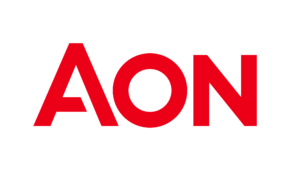
Guest post by AON
An overview of key policy and cover types, best practices for choosing the right policy and making claims.
Business insurance is a purchase you should make, not necessarily one that you want to. But it’s also no understatement that a lot can go wrong while running your business – despite your professionalism and expertise, some things are still out of your control.
Whether it’s theft, a customer injury, property damage or a data breach, these are just a few things that can occur. Without insurance, these issues may result in huge costs for your business that you will have to pay.

Key types of business insurance that you should consider
Professional indemnity insurance
Professional Indemnity (also known as PI insurance) may cover claims made against your business by customers or other third parties alleging that in performing your professional services, your business has caused them loss or harm.
PI insurance will often cover several costs that arise from an allegation of professional negligence, including claim investigation costs, legal costs, settlements and court orders or judgments associated with claims against your business and public relations costs, provided they are covered by the policy.
Public liability insurance
Public Liability insurance may protect your business against claims of personal injury or property damage made by a third party because of your negligent business operations.
Public Liability insurance typically covers damages you’re legally responsible to pay a third party, for the personal injury or property damage caused by your negligent business activities.
This could also include their legal fees. It may also cover your legal costs incurred in responding to the claim, even if a court decides you’re not liable to the third party.
Product liability insurance
Product Liability insurance may help protect against claims of personal injury or property damage that a third party suffers (or claims to have suffered) as a result of your business’s product.
Product Liability insurance typically covers legal liability and legal costs that result from a claim.
Depending on the policy you take out, Product Liability may also cover incidents that occur at your business premises, as well as incidents at other locations. Public & Products Liability are usually sold as one combined policy.
Cyber insurance
Cyber insurance may help cover your business’s financial losses if it falls victim to cybercrime.
It could help cover a wide range of cyber related risks, and risks relating to information technology infrastructure.
A claim under Cyber insurance may cover financial losses your business suffers as a result of a cyber incident (known as first party cover), as well as losses suffered by third parties as a result of the incident (known as third party cover).
Business insurance pack
Business Insurance Pack (also known as BP or Biz Pack) may help protect your business and its assets against liability and unexpected insured events.
BP usually has various sections of cover, and the insured can select the sections that they require. For example, the sections of cover that are commonly included in a BP policy include Fire & Perils, Theft, Glass and Business Interruption, Public and Products Liability.
Personal accident insurance
Personal Accident insurance may help protect individuals in the event of accidental injury or sickness that results in you being unable to work.
Cover may include weekly benefits; capital benefits and optional weekly business expenses cover to support you if you are injured or sick and are unable to work

Choosing between business insurance policies
h the wide range of providers, brokers and policy types, it’s only normal to feel overwhelmed when deciding which insurance policy to take out, leading many business owners to settle for the lowest price they find without considering the features and coverage.
Here are a few key factors to consider when choosing between policies
- Are additional benefits automatically included in the policy or available at an extra cost? For example, unlimited retroactive date, no excess for certain claims or complimentary legal advice.
- Does the insurance provider offer run-off cover for claims-made policies? Professional Indemnity policies are usually a claims-made policy, which means that they can respond to claims that are made against you and notified to the insurer while the policy is in force (during the policy period). When you leave the profession or retire, claims can still be made against you for services you provided when you were working, so to insure you for your past work, you may require run-off cover.
- What is the insurance provider’s claims process like? Making a claim can be stressful, so the last thing you’d need at that point is a lengthy process. It’s wise to choose an insurer that has a dedicated claims team you can contact (in addition to an online lodgement process).
- Does your insurance provider or broker have a deep understanding of your industry? Do they stay on top of emerging risks and regularly reviews their policies to ensure they cover the risks adequately?
- Can your insurance provider meet your additional needs as your business grows?
An experienced insurance broker may help you arrange a policy that is customised for the common risks of your industry. They may also assist you manage your claim with the insurer so you can get the most out of your cover.

Keeping your cover up-to-date
As you continue to adapt your business to an ever-changing environment, it’s also important to ensure your cover stays up to date with your business’s circumstances.
Step 1: Check the basic details of your policy
Basic details like your insured name and address can be easy to skim over, but if incorrect, can cause more than just unnecessary hassle at claim time.
In fact, one of the first things an insurer may look at when a claim is advised is the insured name specified on your policy Schedule.
If the detail of the insured who the legal action or complaint has been made against are not the same as the insured listed on your policy Schedule then your policy may not respond, or at the very least this could hold up the process of assessing the claim and confirming indemnity.
The types of errors which are common include:
- Insuring your trading name instead of your registered entity
- If you have a Pty Ltd company and forgetting to add the Pty Ltd onto the insured name,
- If you forget to add a registered entity / company altogether
Step 2: Review your business’s description and/or insured professional services
Your insurance documents should clearly state all the services your business or practice provides.
If you are currently providing services which are not listed on your insurance policy, or conducting activities which are outside the scope of your qualifications, you may not be insured in the event of a claim.
This is particularly important if you’ve taken on new staff members or independent contractors who provide additional service(s) which are not noted on your insurance policy.
Step 3: Assess the limits & sum insured
In the same way that your work may change over the years, when it comes to insuring your business assets, such as your office equipment, your sum insured should be reviewed to check you have insured for the new replacement value (where required).
If you don’t insure for the new replacement value and the underinsurance clause is applied, it may cause significant financial hardship.
You should also be aware of any obligations you have, such as regulatory requirements or even a contract you may have signed that requires you to maintain specific sums insured. Learn more about underinsurance here.
Step 4: Check the coverage details – Professional indemnity (PI) insurance
PI has several features which should be understood to ensure you have adequate protection.
Some of these features are outlined in this article, but it doesn’t stop there. Some other areas of coverage you may need to look into include whether your policy covers you working out of various locations and whether work performed by contractors is covered.

Making insurance claims and what to expect
Contacting your broker or insurer
The first and most obvious step to take when you need to make a claim is to contact your insurance broker.
Before doing this though, have as much detail as possible ready to provide. It’s a good idea to call your broker to find out how they require you to proceed.
However, it’s also best practice to notify of the incident, claim or complaint by email, so that you’re establishing a record of the notification.
Another point to note, is that if you hold Professional Indemnity insurance, you may be required to notify your broker as soon as practical and before your policy renews or expires, of a ‘circumstance which may given rise to a claim’.
You should also provide any documents, demands, correspondence that you have received, as the insurer needs to review the details and may even require other documents from you.
Gathering evidence and paperwork
Once you’ve contacted your broker and outlined the full situation, you’ll most likely be asked to provide relevant documentation to support your claim.
Again, the type of documentation you’ll need to provide will depend on the type of insurance policy you’re claiming on.
Paying your excess
Many insurance policies will have an excess, but the point at which they need to be paid may vary.
Under some policies, the excess may be payable upfront when the claim is submitted, or at the end of repairs. For other policies, the excess is required to be paid towards the legal and defence costs either when the claim is accepted by the insurer or after the claim has been settled (i.e. cost inclusive excess vs. cost exclusive excess).
If you still have a few unanswered questions about business insurance, you can access Aon’s comprehensive Business Insurance Guide here.

At Aon, we pride ourselves on being specialists within the small business space. SME Talks is your one-stop-shop to educational content and thought leadership articles, helping you navigate through complex business topics.
Discover more from reviewer4you.com
Subscribe to get the latest posts to your email.





